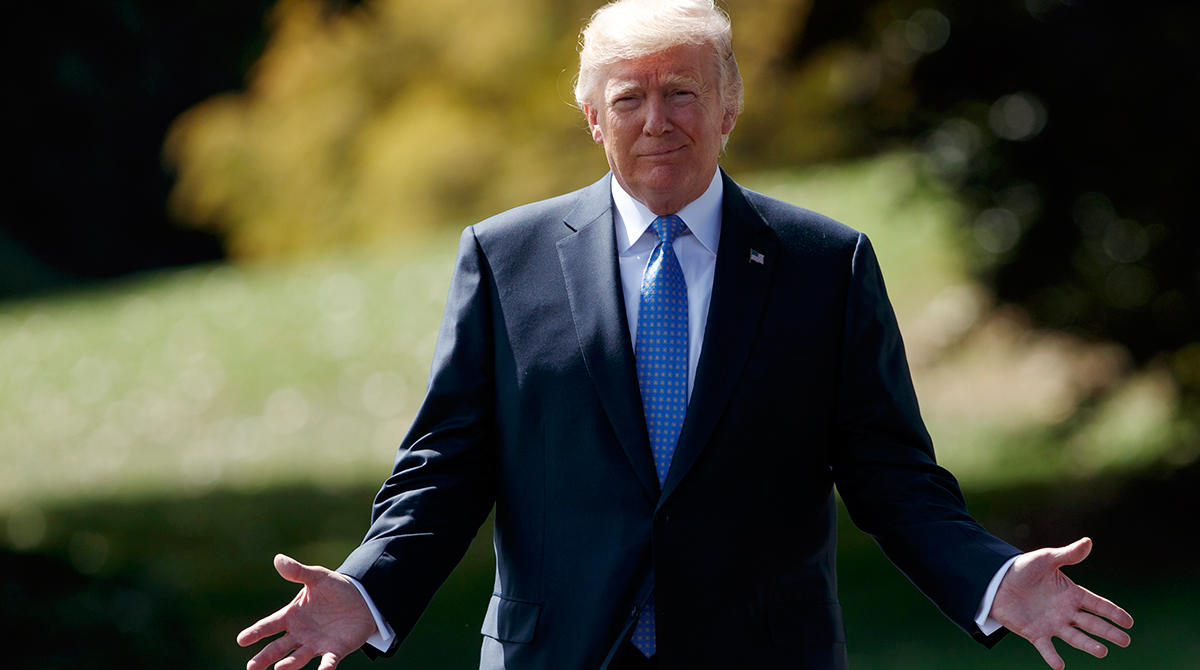US Growth ‘Close to a Peak’ as Trade Spat, Housing Pose Risks

The U.S. economy is booming this quarter as tax cuts power consumers and businesses. Yet risks are mounting that the high will be short-lived.
The housing market is struggling to build on its progress thanks to supply constraints and soaring property values, with data June 19 showing an unexpectedly large drop in construction permits. Manufacturing is coming off the boil amid lengthening order backlogs and accelerating input prices, particularly for oil and partly due to tariffs on metals. On top of that, President Donald Trump has brought the United States to the verge of a trade war with China that could see levies on hundreds of billions of dollars in goods.
It all amounts to increasing headwinds on economic growth that has a fair shot this quarter at reaching 4%, the fastest since 2014. While the Trump administration said such strength makes it a good time to tighten the screws on U.S. trading partners, especially China, markets gave a less-sanguine judgment June 19, and economists caution that prolonged pain from trade will complicate the path for companies and consumers.

Evan Vucci/AP
RELATED: Trump’s China tariffs risk costing US jobs, new study shows
RELATED: Here’s how a US-China trade war could play out
With the U.S. economy about to enter the 10th year of expansion — a time where growth typically faces hurdles in reaching new heights — any slowdown would arrive just as the rest of the world shows signs of losing steam.
U.S. growth “is close to a peak” and momentum will be “cooling from here,” said Gregory Daco, head of U.S. macroeconomics at Oxford Economics in New York. The trade risks “come at a point when the economy itself is in the late stage of the business cycle; it’s already close to capacity, where you can’t easily substitute for imports, and businesses are worried about trade tensions.”
The United States pledged June 15 to push ahead with tariffs on $50 billion of Chinese imports. Trump delivered another jolt June 18 by asking the administration to identify $200 billion in Chinese products for additional tariffs of 10%, plus $200 billion more after that if the Asian nation retaliates.
Beijing vowed to respond “forcefully” to Trump’s latest move.
Further clouds arrived in U.S. data showing mixed progress on housing in May. While groundbreaking on homes jumped to the strongest in more than a decade, it was largely due to a surge in the Midwest and helped by conducive weather. Permits — a proxy for future construction — fell for a second month.
“The pace of permit issuance is much less sensitive to the weather than starts, and it usually reflects the pace of new home sales, which we think have now peaked for this cycle,” Ian Shepherdson, chief economist at Pantheon Macroeconomics, wrote after the report.
RELATED: Bernanke says US economy faces ‘Wile E. Coyote’ moment in 2020
Sales of previously owned homes unexpectedly fell in May for a second month, reflecting a lack of inventory and elevated asking prices, National Association of Realtors data showed June 20.
Federal Reserve officials are taking note of the trade tensions. Chairman Jerome Powell on June 20 reiterated there’s a “strong” case for raising interest rates, while saying that “in principle, changes in trade policy could cause us to have to question the outlook.”
“Those concerns seem to be rising, for the first time, we’re hearing about decisions to postpone investment, postpone hiring,” Powell said at a European Central Bank forum in Sintra, Portugal.
That follows similar remarks by Atlanta Fed President Raphael Bostic.
“I began the year with a decided upside tilt to my risk profile for growth, reflecting business optimism following the passage of tax reform,’’ Bostic said June 18 in Savannah, Ga. “That optimism has almost completely faded among my contacts, replaced by concerns about trade policy and tariffs.
Perceived uncertainty has risen markedly.”
The Atlanta Fed’s GDPNow tracking estimate for the current quarter stands at 4.7%, after a reported 2.2% growth pace in the prior three months. Retail sales rose in May by the most in six months, a sign that consumer spending, which accounts for about 70% of the economy, is on solid ground amid lower taxes, elevated confidence and strong hiring.
What Bloomberg Economists Say
Trade concerns are registering in the periphery of sentiment surveys spanning households to large manufacturers. Should they become more pronounced, economic headwinds could undermine much of the benefit from tax reforms enacted at the start of this year.
— Carl Riccadonna
While hardly anyone expects the rate of expansion to hold at second-quarter levels, the various risks make such rapid gains even less likely in the future. The International Monetary Fund said last week that the U.S. tax cuts will only give a temporary boost to the economy — a conclusion disputed by the Trump administration, which forecasts sustained growth of 3%.
Manufacturing, while still expanding at a solid pace, has cooled from levels reached in late 2017 and early 2018, according to surveys from the Institute for Supply Management.
The gauges reflect a pickup in prices for materials and a jump in order backlogs, which rose last month by the most in 14 years. One bright spot for manufacturers, vehicle production, also may be affected as Trump has threatened to impose automobile tariffs.
While there’s little chance of a sudden deceleration in U.S. expansion, Oxford’s Daco said there’s potential for a “more significant shock” from trade policy in 2019, and cooling global growth also means less of a buffer for America.
“The administration may be taking a gamble in saying tariffs won’t have an immediate impact in a strong economy, but that’s just very short-sighted,” he said.
With assistance from Vince Golle.




